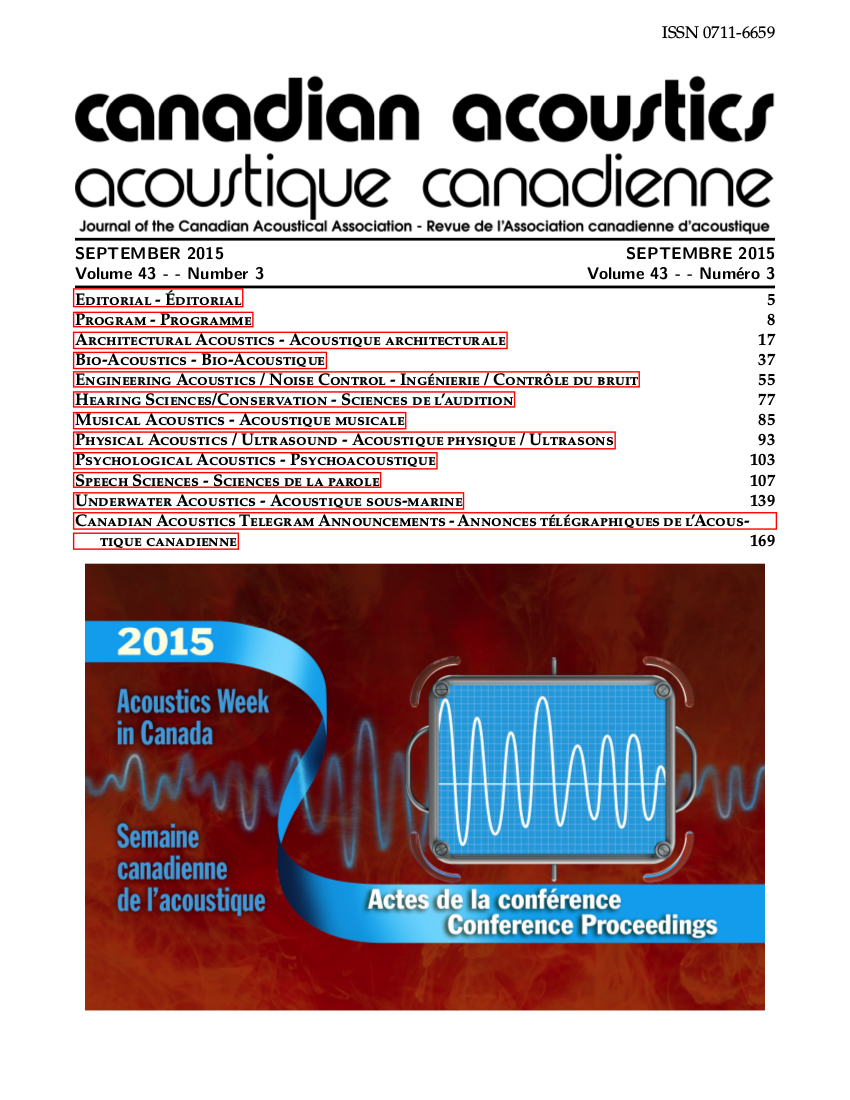Communication between native and non-native speakers of English in noise
Abstract
Non-fluency has a negative impact on speech understanding in noise, particularly when hearing protection devices are worn. In multi-national military operations where the communication language is English, it is important to understand the effects of non-native speech and accent on speech understanding. Twenty-four normal-hearing participants were divided into two groups: monolingual English speaking from birth (NA group), and those who learned English after the age of 10 (NN group). All participants completed the Language Experience and Proficiency Questionnaire (LEAP-Q; Marian et al., 2007) to confirm their group assignment. Two experimental sessions were completed, in which each participant was paired with an NA participant in one session and an NN participant in the other. The modified rhyme test (MRT) and speech perception in noise test (SPIN) were administered with each participant pair using two methods. In the first, participants spoke to each other using a communication headset (radio) in background noise of 80 dBA. In the second, the particpants wore the headset with the radio off and spoke to each other face-to-face in background noise levels of 55, 60 and 65 dBA. Performance was calculated as the percentage of correct responses. For the MRT, there was a main effect of talker for both the face-to-face (NA- 79.6%; NN-75.2%), and radio conditions (NA-87.2%; NN- 77.5%). There was also a main effect of background noise level for the face-to-face condition (81.1%, 78.3% and 72.8% for the lowest to highest noise levels, respectively). For the SPIN, there was a main effect of the listener in both the face-to-face (NA-70.9%; NN-54.1%) and radio conditions (NA-86.4%; NN-73.8%), as well as a main effect of background noise level for the face-to-face condition (68.4%, 63.5% and 55.7%). Overall, the results indicate that both NA and NN listeners perform poorly when listening to NN talkers.
Additional Files
Published
How to Cite
Issue
Section
License
Author Licensing Addendum
This Licensing Addendum ("Addendum") is entered into between the undersigned Author(s) and Canadian Acoustics journal published by the Canadian Acoustical Association (hereinafter referred to as the "Publisher"). The Author(s) and the Publisher agree as follows:
-
Retained Rights: The Author(s) retain(s) the following rights:
- The right to reproduce, distribute, and publicly display the Work on the Author's personal website or the website of the Author's institution.
- The right to use the Work in the Author's teaching activities and presentations.
- The right to include the Work in a compilation for the Author's personal use, not for sale.
-
Grant of License: The Author(s) grant(s) to the Publisher a worldwide exclusive license to publish, reproduce, distribute, and display the Work in Canadian Acoustics and any other formats and media deemed appropriate by the Publisher.
-
Attribution: The Publisher agrees to include proper attribution to the Author(s) in all publications and reproductions of the Work.
-
No Conflict: This Addendum is intended to be in harmony with, and not in conflict with, the terms and conditions of the original agreement entered into between the Author(s) and the Publisher.
-
Copyright Clause: Copyright on articles is held by the Author(s). The corresponding Author has the right to grant on behalf of all Authors and does grant on behalf of all Authors, a worldwide exclusive license to the Publisher and its licensees in perpetuity, in all forms, formats, and media (whether known now or created in the future), including but not limited to the rights to publish, reproduce, distribute, display, store, translate, create adaptations, reprints, include within collections, and create summaries, extracts, and/or abstracts of the Contribution.


